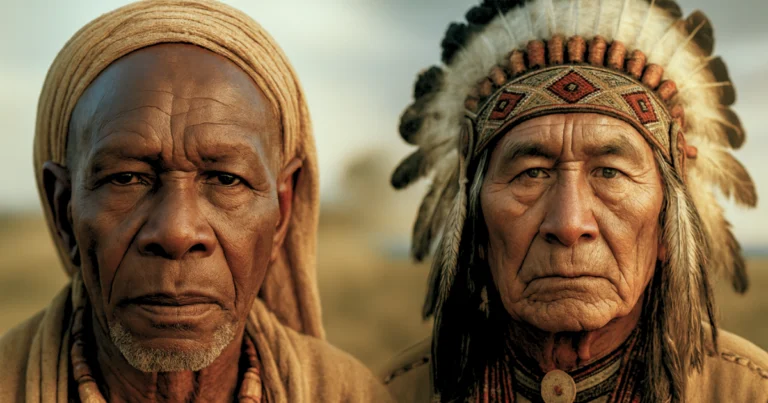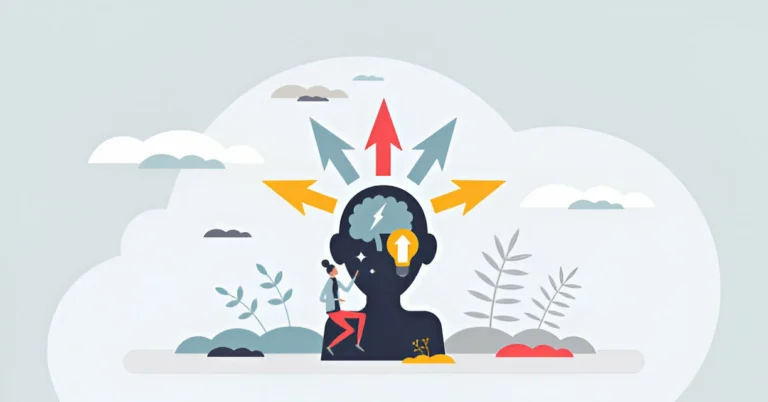Fear unveiled: from instinct to manipulation
Who doesn’t experience fear in this vast world? Even a newborn infant, devoid of understanding or reasoning, cries under the grip of fear.
At the core of our being, a microscopic sentinel, the amygdala, stands watch in silence, like a vigilant guardian confronting the unknown. This biological safeguard detects the slightest threat, triggering the fleeting moment of fight or flight. However, when this mechanism becomes overactive, fear transforms into an internal tyrant, embedding traumatic memories that manifest as persistent nightmares and painful recollections.
As a universal and fundamental emotion, fear is as old as humanity itself. It protects us by awakening our survival instincts, yet it can also become a paralyzing burden when excessive or distorted. In today’s world, fear is no longer confined to the personal sphere; it spreads and amplifies, turning into a tool of social and political manipulation.
But where does this intense fear originate? Why does it sometimes become an overwhelming weight? And how do some manage to tame it while others remain its powerless captives? To answer these questions, we must delve into the origins of fear, its mechanisms, and its distortions.
Fear through the ages: an ancient instinct with modern consequences
Fear is an anxiety-provoking sensation experienced in the presence or anticipation of danger, whether real or imagined. It manifests through physiological reactions (increased heart rate, sweating, trembling), behavioral responses (flight, freezing, or fight), and emotional states (anxiety, panic). Fear can be triggered by tangible threats (a snake, a cliff) or abstract ones (fear of failure, death, or the unknown).
“The word ‘fear’ carries so much shame,” writes G. Delpierre, “that we conceal it. We bury deep within us the fear that grips our very core.”
To better grasp this idea, it is useful to examine the work of Jean Delumeau, a renowned French historian specializing in the history of mentalities and emotions. In A History of Fear, Delumeau explores how this omnipresent and deeply intimate emotion has traversed time, shaping societies and collective imaginations. For him, fear is not merely an instinctive reaction to danger; it is also a historical construct, molded by narratives and symbols that have, over the centuries, turned this emotion into a vehicle for social and cultural control.
By tracing the history of fear, Delumeau reveals that this emotion is often leveraged to maintain social order or justify collective actions. From the fear of witches to apocalyptic anxieties, each era has cultivated its own terrors, embedding them in powerful symbolic narratives.
The amygdala: the silent guardian of our survival instincts
Within the brain’s vast neural network, fear travels multiple pathways, yet they all converge at a critical hub: the amygdala. This small structure, located in the limbic system within the temporal lobe, plays a central role in detecting danger. While it does not contain a higher neuronal density than other regions, the amygdala is distinguished by its extensive connectivity with the rest of the brain, allowing it to rapidly process sensory information and influence numerous nervous system functions.
Patrik Vuilleumier, a professor in the Department of Fundamental Neurosciences, explains that “the fear circuits in the brain are now well understood”: the amygdala is the central point where an external stimulus is assigned a positive or negative emotional value. This structure can generate a physiological response to danger even before the threat is consciously perceived. In doing so, the amygdala instantly triggers a cascade of reactions, rapid heartbeat, pupil dilation, and even temporary paralysis, preparing the body to either confront the threat or flee.
The efficiency of this system is evident in Pavlovian conditioning. A single fearful experience is often enough to imprint an association between a neutral stimulus and a fear response in the amygdala’s emotional memory. For instance, if an animal hears a bell ring while receiving an electric shock, it will eventually display signs of fear at the mere sound of the bell, even in the absence of the shock. In humans, imagery plays a similar role: simply exposing someone to an image of a fearful face can activate the amygdala, illustrating a form of emotional mimicry or empathy.
In moments of danger, the amygdala acts as a conductor, orchestrating the body’s immediate response. Through its direct connections with the brainstem, it suppresses other cognitive processes to prioritize a rapid and automatic reaction. Joseph LeDoux’s famous “snake” anecdote exemplifies this: a hiker instinctively recoils at the sight of a long shape on the ground (which turns out to be a branch), demonstrating that the amygdala has already perceived the threat and initiated a response before the cortex can intervene.
Moreover, research on memory reconsolidation highlights the plasticity of the amygdala. While the imprint of a frightening event can be difficult to erase, it is possible to modify or attenuate this response through new learning, offering promising therapeutic prospects for treating pathological fears.
More than instinct: the psychological and cultural layers of fear
Though fear has a biological foundation, its complexity becomes truly apparent when examined through psychological and cultural lenses. Psychologically, fear is shaped by experience and learning. In The Psychology of Fear: Worries, Anxieties, and Phobias, Christophe André explains that fear develops through subtle cognitive mechanisms. From early childhood, fear takes root through first encounters with the unknown, the absence of familiar cues, or traumatic events. These experiences can leave lasting imprints, creating fertile ground for phobias, anxiety, or panic disorders.
Parallel research by Denis Jodelet on the social representations of fear highlights the profound influence of collective beliefs in shaping this emotion. According to Jodelet, fears are not solely individual reactions but are also sculpted by shared societal narratives. Fear spreads within social groups through cultural filters that help individuals make sense of threatening phenomena. These representations, conveyed by culture, media, and social discourse, deeply shape how people perceive and react to threats, whether real or imagined.
Society and culture thus play a crucial role in constructing fears. Myths, legends, and artistic representations transmit collective anxieties across generations. Certain symbols, darkness, death, emptiness, become archetypes of fear. This transition from individual to collective fear reveals how an intimate sensation can evolve into a deeply embedded social phenomenon.
Fear in the modern world: a tool for survival or control?
In a rapidly evolving world, fear has found new modes of expression. Once primarily tied to concrete dangers, it has become an omnipresent emotion, amplified by the relentless pace of information and the complexities of modern society.
Crises, whether economic, health-related, or environmental, fuel collective fear. Each event, continuously relayed by the media, reinforces the perception of an ever-present threat. Fear is no longer merely a biological warning; it has become a societal force, a shared emotion that extends beyond the individual, shaping public discourse and social behavior.
However, this widespread fear is also exploited as a tool of mass manipulation. In The Culture of Fear (2000), Barry Glassner demonstrates how the media plays a crucial role in amplifying collective anxieties, often disproportionate to actual threats. Sensationalist reporting distorts reality, creating an illusion of constant danger. This manipulation activates the amygdala’s emotional response, making fear a powerful driver of compliance and social control.
Mastering fear
While fear is essential for survival, it can become an oppressive burden when excessive or manipulated. Understanding fear is the first step toward managing it effectively.
On a biological and psychological level, therapies such as Cognitive Behavioral Therapy (CBT) and Eye Movement Desensitization and Reprocessing (EMDR) help reframe fearful memories and regulate amygdala activity, offering effective tools to overcome pathological fears.
Yet, fear is also a weapon of influence. During crises, alarmist narratives exploit our emotions, fostering division and panic. To resist manipulation, it is vital to cultivate critical thinking, question received information, and promote transparency and dialogue.
Ultimately, fear is a paradoxical companion, it warns and protects, but it can also enslave. By understanding its mechanisms and learning to master it, we can transform fear from a tyrant into an ally. A fear overcome is a freedom gained. And in a world that often seeks to intimidate us, that freedom may be our greatest strength. So, let us breathe deeply, question boldly, and step forward with courage. Fear may whisper caution, but it should never dictate our path. It deserves to be understood, mastered, and ultimately transformed into a force that propels us, not one that restrains us.
References :
André, C. (2004). Psychologie de la peur : Craintes, angoisses et phobies. Odile Jacob.
Brewin, C. R. (2011). The nature and significance of memory disturbance in posttraumatic stress disorder. Annual Review of Clinical Psychology, 7, 203-227. https://doi.org/10.1146/annurev-clinpsy-032210-104544
Delumeau, J. (2000). Une histoire de la peur. Fayard.
Glassner, B. (2000). La culture de la peur : Pourquoi les Américains ont peur de tout. Climats.
Jodelet, D. (1989). Les représentations sociales de la peur. Presses Universitaires de France.
LeDoux, J. (2003). Le cerveau des émotions : Les mystérieux fondements de notre vie émotionnelle. Odile Jacob.
Pitman, R. K., Shalev, A. Y., & Orr, S. P. (1993). Biological findings in post-traumatic stress disorder. Journal of Clinical Psychiatry, 54(Suppl), 28-39.
Vuilleumier, P. (2015). Neurosciences et mécanismes de la peur. Springer.

Ahmed El Bounjaimi
Copywriter-Content Designer
Master’s in Organizational Communication, Hassan II University
Bachelor’s in Philosophy of Communication and Public Spheres, Hassan II University







